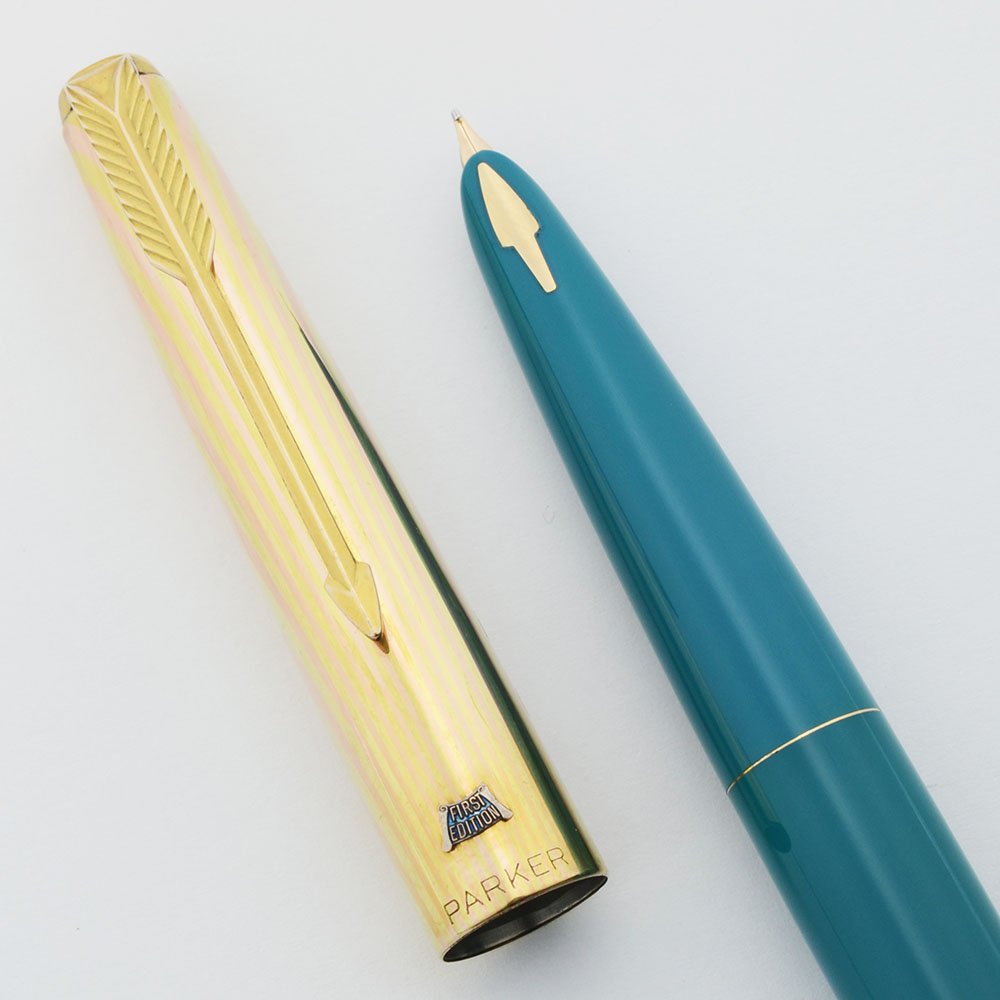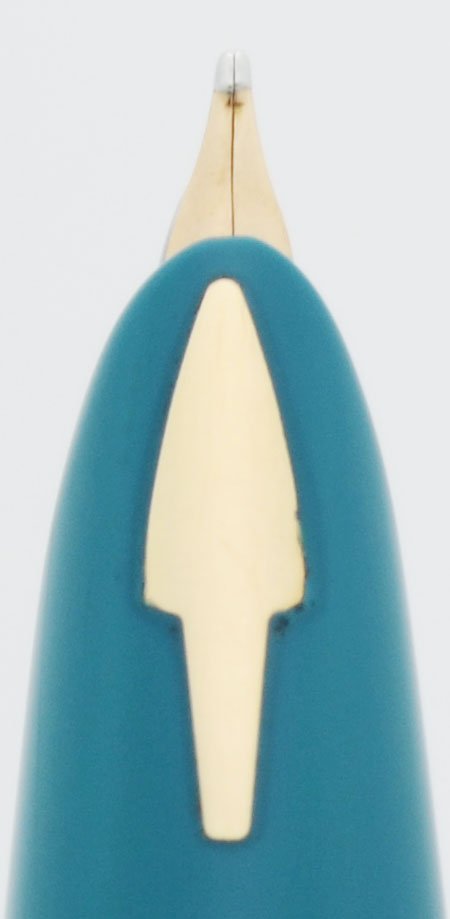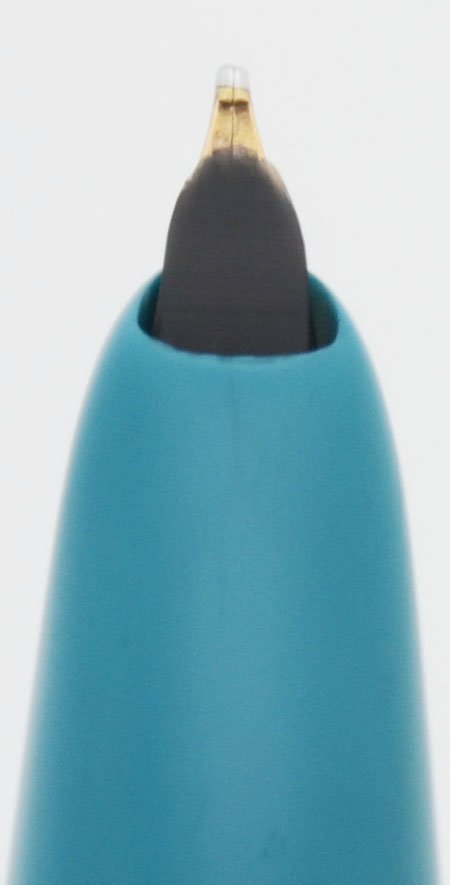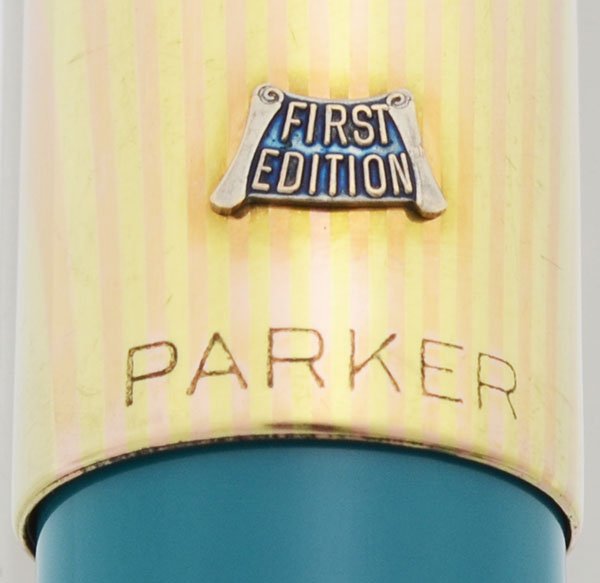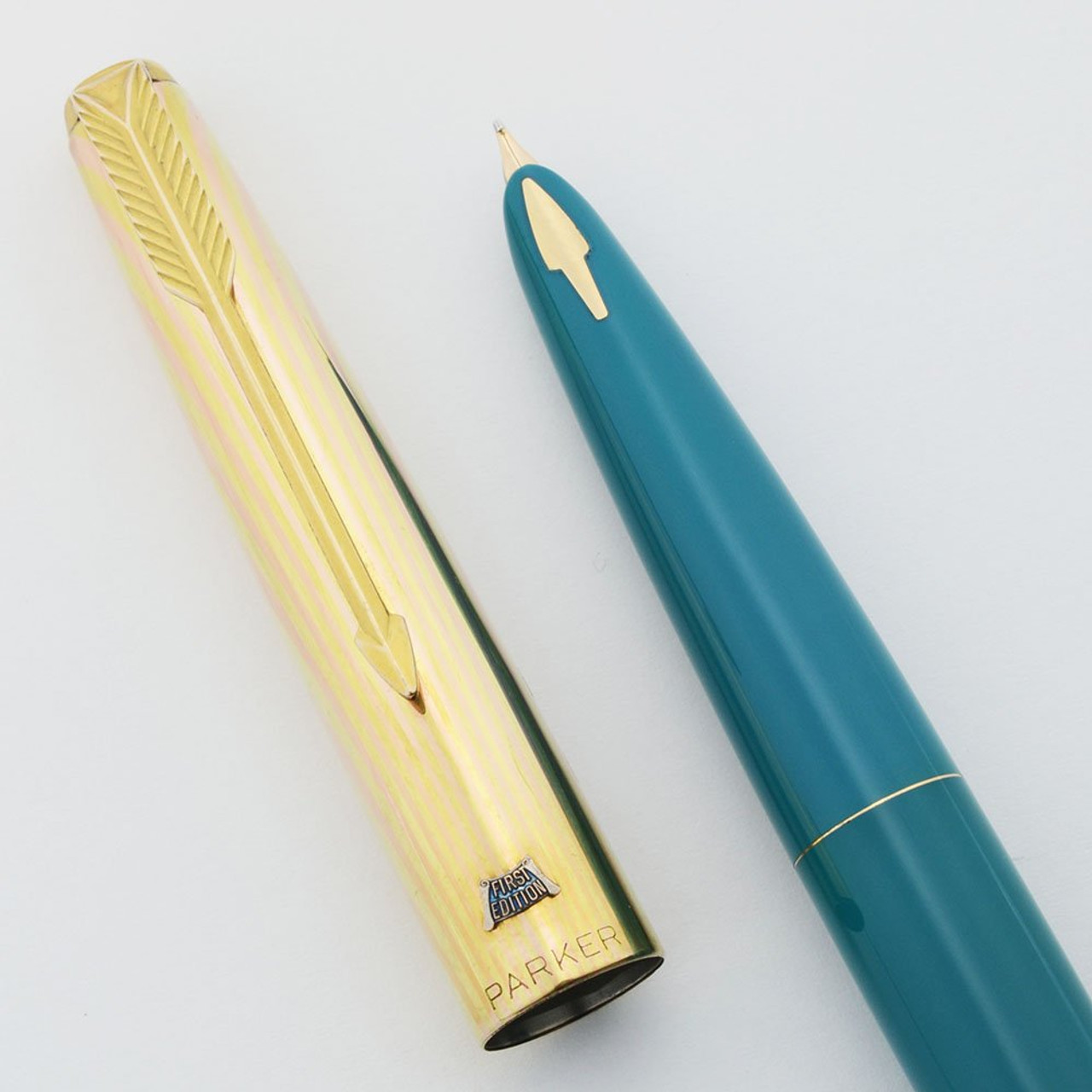Product Description
Type Fountain pen with unique filling system
Product Name Parker 61 Heirloom - Mark I, the "Heirloom" refers to the cap used. There is some contradictory information out there on the different versions but we are calling the Mark I the thin clutch ring version and the Mark II the thicker clutch ring version. (The Mark III would be the cartridge/converter version. The clutch ring is the band between the section and barrel.)
Manufacturer and Year Parker, USA -- 1956, it has the first year emblem on the cap.
Length 5-9/16"
Filling System Capillary filling system which is unique to this model. See further details below.
Color Vista Blue, a slightly green bright blue, body with the Heirloom "rainbow" cap made of alternating ripples of rose and green gold fill. The shield on the green layer says, "1/7 16K GF," and the shield on the rose layer says, "1/7 14K GF." Each end of the pen has a pearlescent jewel inset.
Nib Medium 14k nib is smooth, with good tipping material. It is a little broad but we decided to call it a medium nib.
Condition Excellent + condition. The cap has very strong delineating between the bands and the color of the plastic is perfect. The arrow inset has an uneven border on the right side. The teflon coating on the filling system is intact. No cracks or marks. The pearlescent jewels look perfect. When we got the pen the nib had been bent and the tip of the hood was chipped, so we disassembled the nib, straightened the nib, and smoothed and rounded the tip of the hood.
We tested the pen and confirmed that it filled properly. You'll need to be patient when you fill it the first time, as it takes a few minutes for the capillary system to draw in enough ink to get started the first time.
A word or two about the Parker 61 Capillary Filling System. If you are not familiar with this unique design, you should read this.
Here is how you fill a Parker 61, and an insight into how the pen actually works. Unscrew the barrel and stick the back end of the pen (aka the capillary cell) into a bottle of ink. Wait a few minutes (probably more like a half hour when you first start one of these older used ones), and let the ink wick up into the capillary cell. The cell contains a sheet of perforated plastic that has been given a 3-D pattern resembling tire tread, and rolled up. The perforations allow ink to seep between the rolled-up layers, and the tread pattern maintains space between the layers. In the middle of this tube, which runs the entire length of the capillary cell, is the feed. To keep things clean, the capillary cell has on a coating of teflonon the outside that is intended to shed ink as the user withdraws the pen from the ink bottle, leaving very little ink to be wiped off. The end of the barrel contains a spring-loaded thingey which covers the open end of the capillary tube, but still allows it to vent.
